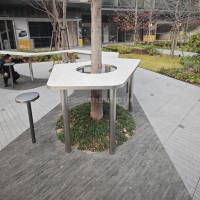Welcome to the website for landscape facilities products and knowledge.
What are the most effective ways to measure the bin’s impact on reducing environmental contamination?
Measuring the effectiveness of bins in reducing environmental contamination requires a multi-faceted approach. One key metric is the waste diversion rate, which calculates the percentage of waste redirected from landfills to recycling or composting. Higher diversion rates indicate successful bin usage and reduced contamination.
Another method is carbon footprint analysis, assessing how much greenhouse gas emissions are avoided due to proper waste segregation. Bins that facilitate recycling or organic waste processing can significantly lower a community's carbon footprint.
Litter reduction metrics also play a role. By comparing pre- and post-bin installation litter levels, municipalities can gauge the bin's impact on preventing waste from entering ecosystems. Additionally, user engagement surveys help evaluate public awareness and behavioral changes, ensuring bins are used correctly.
Finally, contamination audits of collected waste determine if non-recyclables are mistakenly placed in recycling bins, undermining environmental goals. Combining these methods provides a comprehensive view of a bin's true impact on sustainability.
Related search:

Recommendation
An outdoor bar counter with stainless steel and terrazzo materials in an irregular shape